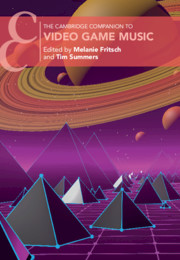Book contents
- The Cambridge Companion to Video Game Music
- Cambridge Companions to Music
- The Cambridge Companion to Video Game Music
- Copyright page
- Contents
- Figures
- Tables
- Musical Examples
- Contributors
- Preface
- A Landmark Timeline of Video Game Music
- Foreword: The Collaborative Art of Game Music
- Introduction
- Part I Chiptunes
- Part II Creating and Programming Game Music
- 4 Building Relationships: The Process of Creating Game Music
- 5 The Inherent Conflicts of Musical Interactivity in Video Games
- 6 The Triple Lock of Synchronization
- 7 ‘Less Music, Now!’ New Contextual Approaches to Video Game Scoring
- 8 Composing for Independent Games: The Music of Kentucky Route Zero
- Part III Analytical Approaches to Video Game Music
- Part IV Realities, Perception and Psychology
- Part V Game Music, Contexts and Identities
- Part VI Beyond the Game
- 24 Producing Game Music Concerts
- Select Bibliography
- Index
5 - The Inherent Conflicts of Musical Interactivity in Video Games
from Part II - Creating and Programming Game Music
Published online by Cambridge University Press: 15 April 2021
- The Cambridge Companion to Video Game Music
- Cambridge Companions to Music
- The Cambridge Companion to Video Game Music
- Copyright page
- Contents
- Figures
- Tables
- Musical Examples
- Contributors
- Preface
- A Landmark Timeline of Video Game Music
- Foreword: The Collaborative Art of Game Music
- Introduction
- Part I Chiptunes
- Part II Creating and Programming Game Music
- 4 Building Relationships: The Process of Creating Game Music
- 5 The Inherent Conflicts of Musical Interactivity in Video Games
- 6 The Triple Lock of Synchronization
- 7 ‘Less Music, Now!’ New Contextual Approaches to Video Game Scoring
- 8 Composing for Independent Games: The Music of Kentucky Route Zero
- Part III Analytical Approaches to Video Game Music
- Part IV Realities, Perception and Psychology
- Part V Game Music, Contexts and Identities
- Part VI Beyond the Game
- 24 Producing Game Music Concerts
- Select Bibliography
- Index
Summary
Within narrative-based video games the integration of storytelling, where experiences are necessarily directed, and of gameplay, where the player has a degree of autonomy, continues to be one of the most significant challenges that developers face. In order to mitigate this potential dichotomy a common approach is to rely upon cutscenes to progress the narrative. Within these passive episodes where interaction is not possible, or within other episodes of constrained outcome where the temporality of the episode is fixed, it is possible to score a game in exactly the same way as one might score a film or television episode. It could therefore be argued that the music in these sections of a video game is the least idiomatic of the medium. This chapter will instead focus on active gameplay episodes, and interactive music, where the unique challenges lie. When music accompanies active gameplay a number of conflicts, tensions and paradoxes arise. In this chapter these will be articulated and interrogated through three key questions:In the following discussion there are few certainties, and many more questions. The intention is to highlight the issues, to provoke discussion and to forewarn.
- Type
- Chapter
- Information
- The Cambridge Companion to Video Game Music , pp. 74 - 93Publisher: Cambridge University PressPrint publication year: 2021
- 1
- Cited by



